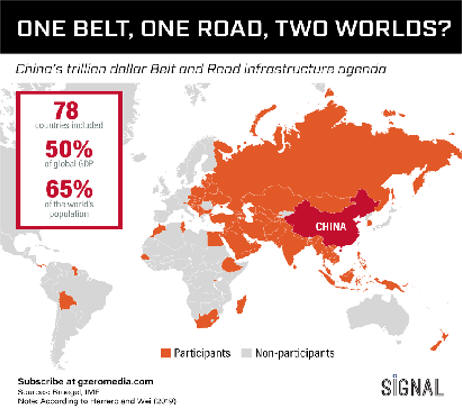 |
A. Five Reasons China Isn't Backing Down K. Rudd
1.
Trump’s trade war confirms China's belief that Barack Obama’s “pivot to
Asia,”
was an expansion into China’s sphere of influence.
2.
Recent actions means trade talks must be delayed at least
until after US midterm elections.
3.
Xi Jinping's ability to consolidated more power is partially
based on fulfilling a “China Dream.” He can’t back down.
4.
China’s economy will suffer little, much less than 0.5
percent of GDP.
5.
China believes she has
less near-term political vulnerability
but greater long-term economic vulnerability as
China’s authoritarian state-dominated capitalism better absorbs economic
shocks. Coronavirus will test this belief.
The bottom line: Trump and Xi believe near-term fallout can be managed
so
this trade war will probably last longer and inflict damage.
Kevin thinks
keeping
Chinese students in America is very important to long-term political
security.
Australia has relatively many more Chinese students.
Editor's Note: Historically, not listening to our allies, has not worked
out well.
Think Vietnam and Iraq/Afghanistan/Syrian wars.
B.
Kevin Rudd: China will not over react to Trump's trade policy
1. She will lower trade balance.
2 . Her relatively low tariffs of about 9% will be lowered.
3. China could propose zero tariffs in both countries and could make same
offer to others.
C.
Relations
With Russia
Bremmer video
See
21st Century
Free Trade Analysis
|
D. Trade
Thoughts from
China Crisis
of Success
video
by Dr. William Overholt
|
|
|
|
|
|
|
Three Categories of US Desires
|
|
|
Affect of Trade War on China's
Trade Policy
|
1. Trump's 90-day Tariff Deal 12/18/19
2. Three small numbers are making big waves in China. The digits 9-9-6, a
shorthand for 9am to 9pm, six days a week,
have
become a rallying cry for tech workers frustrated with their bruising
work schedules 4/17/19
Source
3. From Bloomberg's New Economy Forum 4/19/19
China has no desire to scale back its
winner-take-all industrial ambitions
or to make
fundamental changes to its authoritarian capitalism.
A mix that includes subsidies for state
industrial champions and economic
policy
favoring local over foreign players, has
succeeded.
Any final agreement will have
Chinese pledges to buy more U.S. products
but few
promises to restructure the economy.
A trade deal won’t end China-U.S. frictions. In fact, the conflict has only just begun.
A 2018
report from Freedom House, a democracy watchdog, noted that 18
countries (so far)
now use Chinese-made intelligent monitoring systems
and 36 have received training in topics
like "public opinion guidance,"
a euphemism for censorship. The list of countries includes
the UAE,
Zimbabwe, Uzbekistan, Pakistan, Kenya, and Germany.
The worldwide infrastructure-building
project "has pushed China’s huge construction, telecommunications and
shipping companies to go global at a time when a cooling domestic
economy means less business at home."
Editor's
Note: One common problem in centrally planned economies is
data on the cost of misadventures China's overbuilding housing at home.
Japan
rushed into HDTV while US, very profit dependent, waited for digital
technology.
|
|
The Impact of Chinese Trade on U.S. Employment:
The Good, The Bad, and The Apocryphal
by
Chinese competition on US manufacturing had a striking regional variation from 2000-2015.
In high-human capital areas like West Coast or New England, manufacturing job losses saw industry switching to services. Companies changed to research, design, management or wholesale. Hence, redistributed of jobs went from manufacturing in lower income locations to services in higher income locations.
In the low human-capital South and mid-West, manufacturing plants closed without much increased service employment.
Offshoring appears to drive these manufacturing job losses.
This employment impacts was strongest between from 2000 to 2007
Ling Chen: New
Insights on the 'Made in China' Model
1. Began with
Top Down Trade which succeeded using cheap labor
2. Success cause companies to move to other
Asian companies
3. Bottom up home grown Gorilla Investors
will contribute to
Made in China_2025
4. Ling Chen's analysis supports the
Beijing Model. See
Washington Consensus vs. Beijing Consensus/
History of China: What is China, Anyway?
Modern
Western Civilization Economic History
China was part of the Colonial Empire of Great Britain
Opium Trade was a Big Money Maker for England.
 |
